Microsoft kill crazy: ai super employees are subverting the fate of 80 million white-collar
Monday in the office is always the most torturous – coffee is cold and renewed in hand, invoices are piling up, technical work orders are backlogged until the end of the month, and quarterly sales reports are stuck at the 57% progress bar. Just as the global workplace is drowning in morning meetings, a red light is on in Microsoft’s conference room 371: a new AI agent system based on big models is giving every worker a ‘digital doppelgänger’.
These intelligences, tucked away in Microsoft 365 and Dynamics 365, are, to use engineer Sam Schillers’ analogy, “like building highway tollbooths in the human brain”. When ordinary white-collar workers are still manually checking logistics documents, AI agents have opened the global procurement system “God’s perspective”: real-time monitoring of supplier dynamics in 32 countries, predicting inventory fluctuations with an accuracy of 87%, and even automatically rescheduling the schedules of transatlantic freighters in the middle of the night.
.

Microsoft CTO Shan M. Shraji revealed that the next generation of AI agents features an incredible triple evolution:
72-hour memory chain – every working conversation is cut into knowledge crystals, and any new instruction wakes up the relevant memory module. Marketing department needs to urgently recall product parameters from three years ago?AI agents fish out key details from 4,800 documents in 7 seconds and automatically generate a risk analysis matrix.
Full Scenario Toolchain – When a multinational retail group tried out the “Overseas Warehouse Optimizer” AI agent, the digital employee accomplished eye-popping results within a month: bridging the data silos between Shopify and the ERP system, shortening the return processing cycle by 63%, and even predicted that a certain type of parasol would be a hot seller in southern Germany, stocking up in advance to avoid $800,000 in losses.
Quantum Decision Tree – The scariest thing about sales AI agents isn’t the anthropomorphic communication, it’s their ‘decision projection maps’. A medical device sales executive in Richmond discovered that his ‘digital sales reps’ emailing back and forth with customers would simulate 12 possible quoting strategies that competitors might use in tandem, and construct corresponding counter-plans.

II, the stunning leap from IT Ops to boardroom war games
Microsoft Research exposed internal test data shows: equipped with the latest GPT-5 engine AI agent, in the supply chain management test captured 134% efficiency gains; in the after-sales service scenario, the length of manual intervention for a single consulting work order was shortened from 48 minutes to 15 seconds.
Apana, an IT engineer in Mumbai, found that her sub-administrative “Fault Terminator” AI agent could operate like a senior commander: monitoring 1,300 devices across the company in real time, and automatically activating the “Disaster Preparedness Trifecta” when encountering network fluctuations-prioritizing the quarantine of infected endpoints, synchronously generating vulnerability remediation solutions, and sending relevant staff a The company’s disaster recovery team will also be able to provide temporary solution packages to the relevant employees.
In the higher dimensions of the business game, “strategic staff” AI agents are subverting the traditional consulting industry. The “Capital Catcher” system developed by a private equity fund in conjunction with Microsoft captured a M&A opportunity that peers hadn’t found in three years in just three months: by cross-analyzing data on industrial and commercial changes in 132 countries, it accurately predicted that a lithium battery company would be acquired for a high price 27 days before the Abu Dhabi Sovereign Fund acted.

III. The undercurrent of ‘silicon-based evolution’
Behind the blowout development of AI agents is Microsoft’s 19-year hidden layout. the head of AI Frontier Labs, Isis Karma, revealed that “the big model has allowed us to morph our edge computing network into a living neural network, with helium-cooled tidal waves of data running underneath every Copilot console”.
But this evolution carries deadly risks. Sarah Bird, Microsoft’s chief product officer for Responsible AI, put it bluntly: ‘We put two withdrawal barriers on each sales agent’s gold to prevent them from committing to customers without authorization’. In a foundry in Shenzhen, there was an incident where a purchasing agent placed an order for $2.2 million worth of parts at 2 a.m. It was a good thing that the triple audit mechanism was triggered.
A deeper ethical dilemma is: when a certain ‘product development spy’ AI agent autonomously generates an avoidance program by monitoring 28 competitors’ patent databases, whose inspiration should this $130 million worth of trade secrets be counted? Microsoft’s internal leaked documents reveal that they are developing a ‘blockchain fingerprinting system’ to give every AI decision-making session a traceable track of thought.

iv. permanent collapse of the global knowledge system
As Microsoft’s Chief Marketing Officer Spataro predicted: “When every Word document has a built-in knowledge navigator, and the corporate cloud disk becomes a never-ending tower of Babel of information, the traditional sense of the ‘workplace moat’ will completely collapse.
The hottest job in the next three years could be the ‘AI human orchestrator’ – setting the boundaries of power for 12 types of workflow agents while preventing them from becoming digital leviathans. And university professors from Seoul to São Paulo are suddenly discovering that the best classroom teaching assistants are actually Microsoft-developed ‘Socratic Question’ AI agents that can generate 70 solutions in five minutes.
The most profound metaphor for this revolution is perhaps hidden in the digitalized Roman arena of Microsoft’s labs: 61 industrial robots are given different roles and autonomously negotiate urgent orders through AI agents. They not only measured the optimal production sequence, but even spontaneously adopted a swarming collaboration algorithm in the carton packing process – a methodology that came from the remnants of a human engineer’s paper from two years ago.



